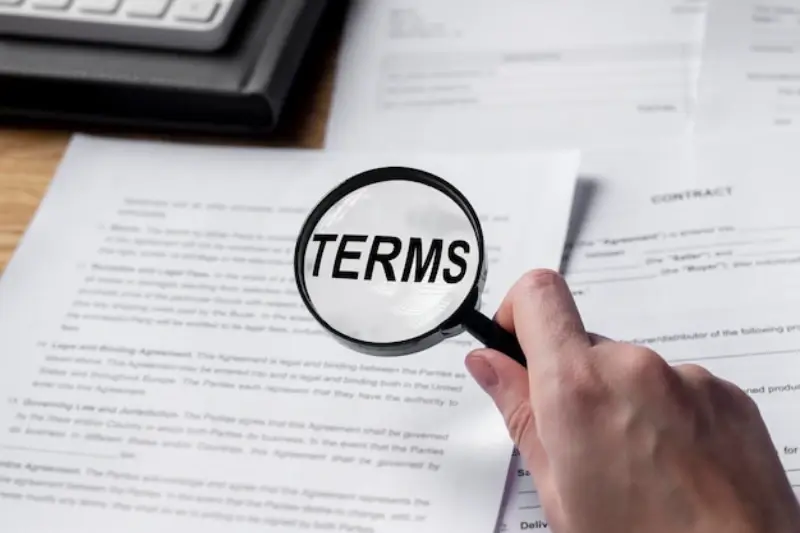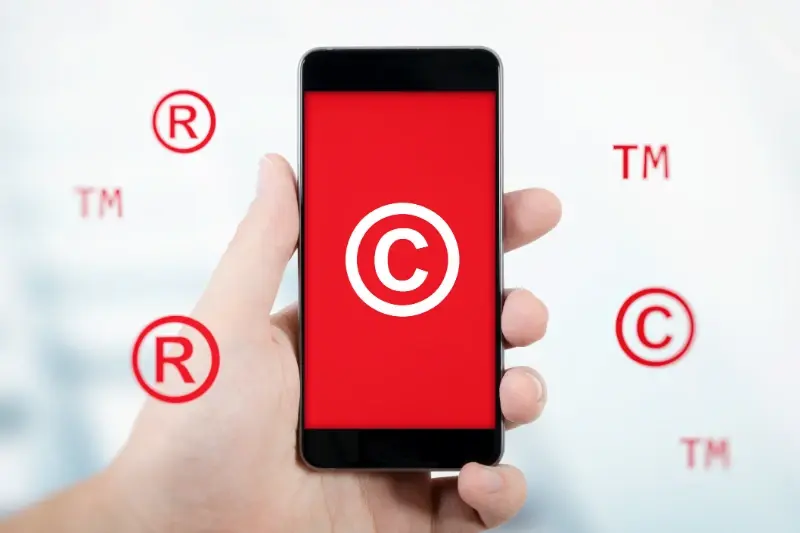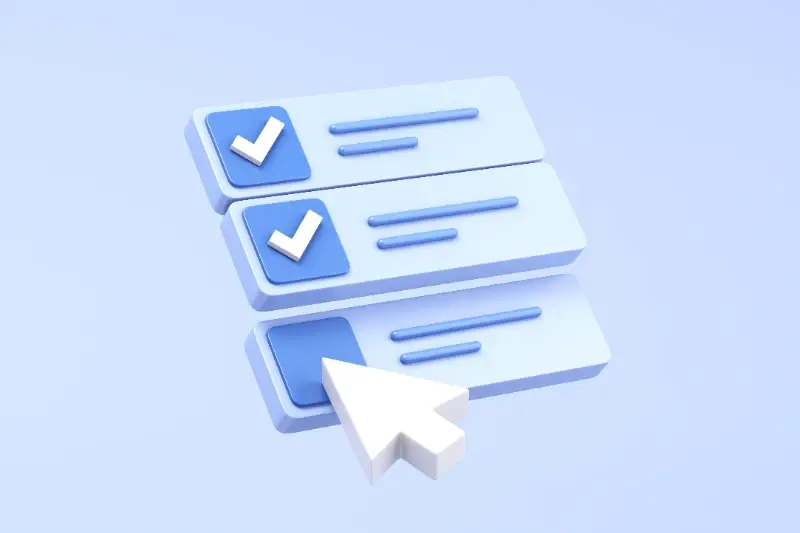5 Copyright Mistakes That Could Kill Your App Launch
Building a mobile app is one of the most exciting things you can do as an entrepreneur, but it's also one of the riskiest when it comes to copyright mistakes. I've been working in mobile app development for years now, and I've seen brilliant apps get pulled from app stores, receive cease and desist letters, or face expensive lawsuits—all because of simple copyright oversights that could have been avoided. The thing is, when you're focused on creating something new and exciting, it's easy to forget about the legal side of things.
Copyright mistakes in mobile app development aren't just minor hiccups; they can completely destroy your launch and cost you thousands in legal fees. From using someone else's images without permission to copying competitor screenshots, these slip-ups happen more often than you might think. What makes it worse is that many developers and startup founders don't realise they're making these mistakes until it's too late—when they're already facing legal action or their app has been removed from the store.
The most expensive legal advice you'll ever get is the advice you didn't seek before launching your app
The good news is that most copyright mistakes are completely preventable once you know what to look out for. Understanding intellectual property law might seem daunting, but the basics are straightforward enough that anyone can grasp them. By identifying these common pitfalls before they happen, you can protect your app, your business, and your reputation whilst avoiding those nasty legal risks that could sink your launch before it even begins.
Using Someone Else's Work Without Permission
This is probably the most common copyright mistake I see when reviewing app projects. Developers and founders grab images from Google searches, lift icons from design websites, or use fonts they've downloaded without checking the licence terms. It seems harmless enough—after all, if it's on the internet, it's free to use, right? Wrong.
Every piece of creative work you see online belongs to someone. That includes photographs, illustrations, icons, fonts, and even colour schemes in some cases. Just because you can right-click and save an image doesn't mean you have permission to use it in your commercial app. Copyright law protects creators automatically; they don't need to register their work or put a big © symbol on it.
What Counts as Someone Else's Work
We're talking about any creative content you didn't make yourself or pay someone to make for you. Stock photos without proper licences, artwork from Pinterest, screenshots from other websites, or even blog post content you've copied and pasted. The temptation is huge when you're working on a tight budget—why spend money on custom graphics when there are millions of images available for free?
The problem comes when the original creator finds your app and decides to take action. They might send a cease and desist letter, demand payment, or worse—take you to court. App stores also take copyright violations seriously and can remove your app without warning. I've seen promising apps disappear from the App Store overnight because they used unlicensed content.
The solution is straightforward: only use content you own, have created yourself, or have properly licensed from legitimate sources like Shutterstock or Unsplash.
Ignoring Trademark Laws When Naming Your App
Choosing a name for your app might seem like the fun part of development, but it's actually one of the trickiest legal minefields you'll navigate. I've watched countless developers fall in love with a name, only to discover months later that they can't use it—and by then, they've already printed business cards and built their entire brand around it.
Trademark law protects names, logos, and phrases that identify specific businesses or products. When you use someone else's trademark without permission, you're asking for trouble. The original owner can force you to change your name, demand damages, or even get your app removed from app stores. These legal risks can kill your app launch before it even begins.
What You Need to Check Before Settling on a Name
- Search trademark databases in your target markets
- Check if similar names exist in your app category
- Look for common law trademarks (unregistered but still protected names)
- Review domain name availability
- Search app store listings for similar names
The mobile app copyright landscape is particularly tricky because you're not just competing with other apps. A restaurant chain, clothing brand, or software company might already own the trademark you want to use. Even if they're in a completely different industry, they could still have grounds to stop you.
Always conduct a thorough trademark search before investing time and money in branding. Consider hiring a trademark attorney for complex cases—it's cheaper than a lawsuit later.
Don't assume that slight variations will protect you either. Names that sound similar or could confuse customers can still land you in hot water with intellectual property lawyers. The costs of protecting your intellectual property properly are far outweighed by the potential legal fees you'll face later.
Copying App Store Screenshots and Marketing Materials
Here's something I see far too often—developers taking screenshots from successful apps and using them as inspiration for their own marketing materials. What starts as "inspiration" quickly turns into outright copying, and that's where things get legally messy.
App Store screenshots aren't just pretty pictures; they're copyrighted marketing materials that belong to whoever created them. When you lift screenshots, app descriptions, or promotional graphics from another app, you're stealing someone else's intellectual property. The App Store review team has gotten much better at spotting these violations, and they won't hesitate to reject your app.
What Counts as Copying
The line between inspiration and infringement can be blurry, but here are the main things that will get you in trouble:
- Using identical or near-identical screenshots from another app
- Copying promotional text word-for-word from competitor descriptions
- Lifting graphics, icons, or design elements without permission
- Using someone else's app demo videos or promotional footage
- Recreating marketing layouts that are too similar to existing apps
What makes this particularly risky is that app marketing materials are often the first thing potential users see. If your screenshots look suspiciously similar to a well-known app, users will notice—and so will the original developers. This is similar to copying another app's terms of service—just because it's easily accessible doesn't mean you can use it.
Creating Original Marketing Materials
The solution is straightforward: create your own marketing assets. Take your own screenshots, write your own descriptions, and design your own promotional graphics. Yes, it takes more time and effort, but it protects you legally and helps your app stand out with its own unique identity. Your app deserves marketing materials that actually represent what you've built, not what someone else has created.
Using Unlicensed Music and Sound Effects
Music and sound effects can make your app feel alive. They add emotion, create atmosphere, and help users connect with your content on a deeper level. But here's where many developers trip up—they assume that any music they can find online is free to use. That's a dangerous assumption that could land you in serious legal trouble.
Just because you can download a song or sound effect doesn't mean you have the right to use it commercially. Most music is protected by copyright, and using it without permission in your app counts as commercial use. This applies even if your app is free—the moment you put it on the App Store or Google Play, you're distributing copyrighted material without authorisation.
The Real Cost of Copyright Infringement
Music copyright violations can be expensive. Record labels and artists actively monitor for unauthorised use of their work, and they don't hesitate to take legal action. We're talking about potential damages that could reach thousands or even tens of thousands of pounds—money that most app developers simply don't have lying around.
Copyright infringement doesn't just threaten your bank account; it can destroy your app's reputation before it even gets off the ground
Safe Alternatives That Won't Break the Bank
The good news? There are plenty of legal alternatives. Royalty-free music libraries like Epidemic Sound, AudioJungle, and Freesound offer high-quality tracks for reasonable licensing fees. Some platforms even offer free music under Creative Commons licences—just make sure you understand the specific requirements for attribution. Understanding the difference between copyright and patents can help you navigate these licensing requirements more effectively.
Stealing Code and Design Elements from Other Apps
Here's where things get really tricky—and expensive if you get it wrong. I've worked on hundreds of app projects over the years, and I can't tell you how often clients come to me with a brilliant idea that's actually just a copy of someone else's work. They'll show me an app and say "we want exactly this, but better" without realising they're walking straight into a legal minefield.
Let's start with the obvious: you cannot copy someone else's code. Full stop. Even if you find code snippets online, they're not automatically free to use. Most code is protected by copyright the moment it's written, and using it without permission can land you in serious trouble. This includes everything from the backend systems that make your app work to the frontend interfaces that users see.
Design Elements Are Protected Too
What catches many people off guard is that design elements are just as protected as code. Those beautiful icons, unique layouts, colour schemes, and user interface designs? They're all intellectual property. You can't just screenshot another app's interface and tell your developer to "make it look like this"—that's copyright infringement waiting to happen.
The safest approach is to draw inspiration from multiple sources rather than copying any single element directly. Look at what works well across different apps, then create something original that serves your users' needs. If you're working with developers, make sure you understand your ownership rights over the final product to avoid complications down the line.
Trust me, your app will be much stronger when it has its own identity rather than being a pale imitation of someone else's work. When you're working with remote developers, proper documentation and legal agreements become even more critical to protect your intellectual property.
Conclusion
Look, I'll be straight with you—copyright mistakes aren't just legal technicalities that you can sort out later. They're genuine threats that can completely derail your app launch before it even gets started. I've seen too many brilliant app ideas get buried under cease and desist letters or pulled from app stores because someone thought they could cut corners with someone else's work.
The five copyright mistakes we've covered aren't rare edge cases; they're common pitfalls that catch out even experienced developers. Using unlicensed content, copying marketing materials, ignoring trademark laws, borrowing code without permission, and including unauthorised music might seem like small shortcuts, but each one carries serious legal risks that could cost you thousands in legal fees—or worse, force you to start over completely.
Here's what I want you to take away from this: protecting your app from copyright issues isn't about being overly cautious or paranoid. It's about being smart. When you respect intellectual property laws, you're not just avoiding legal trouble; you're building a foundation that lets your app grow without looking over your shoulder constantly.
The good news? Most copyright mistakes are completely preventable with proper planning. Use licensed content, create original materials, check trademark databases, and when in doubt, get proper legal advice. Yes, it takes extra time and sometimes costs more upfront, but it's infinitely cheaper than dealing with the fallout later. Your app deserves to launch without these shadows hanging over it.
Share this
Subscribe To Our Blog
You May Also Like
These Related Stories

How to Write Terms of Service That Protect You (without Scaring Users Away)

5 Intellectual Property Mistakes That Could Kill Your App Business





